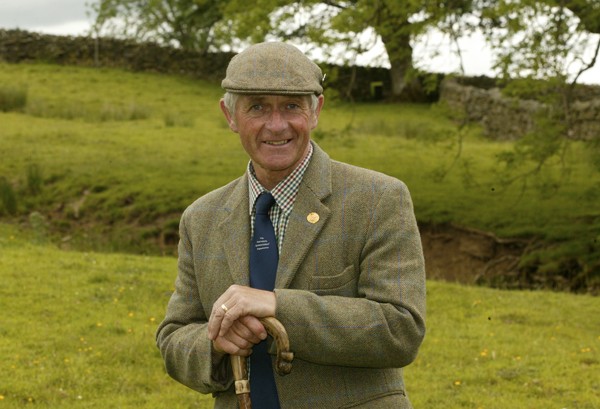Upland keeper

Ask any moorland keeper about the most important staff on a shoot day and those close to the top of the list will be the pickers-up. It may seem an idyllic pastime in August, but when November comes, and there is ice on the surface of the peat and the wind is taking a short cut through you, it?s not so pleasant, especially when you have to sit still for half an hour or more as a drive comes in. Those who do it, and do it well, are a dedicated bunch who tramp mile upon mile every day they are out, for this is no place for an easy day. The ones who do it best put the effort in and cover the ground.
Tricky visibility
The open expanse of the grouse moor may seem an ideal place to pick-up on, with wide-open spaces and good visibility, but often it is not. There is hidden ground, where birds drop unseen by those who wait for them. Gulleys and other undulations make seeing not an easy task at times, and ?see? is what those picking-up on the grouse moor must be able to do. The problem is that they must not be stuck on a high spot, such as a new cairn that has been erected, as they may well deflect birds from the flightline. Unlike picking-up on a pheasant shoot, when they may gather birds as they fall, no movement must be made by pickers-up or dogs on the moor during the drive, as it can lead to grouse deviating from the line into the butts, or once they have passed through the butts, into the next drive. Many a newcomer to the task on a grouse moor has earned the wrath of the keeper by standing up to get a better view. Indeed, they have often been hailed from a distance by the simple words, ?Sit down!?
Suitable sites
The picker-up must fi nd him or herself a suitable place from where they can observe as much as possible. If that can include the butts, all the better, as they can then track birds from the moment they are shot at until they pass into the distance. Any that pitch in or simply drop dead from the sky can then be marked and picked after the drive has ended. Like the flankers, no gaudy clothes are worn. Even on the hottest day, something which blends into the landscape should be donned. The distance pickers-up stand behind the butts is important ? they must be far enough back not to be within distance of dropping shot. Grouse fly low, so taking low shots is the norm, and at the correct angle shot will carry a considerable distance and still pack a punch. So, back they go until they are safe, though they must know just how far they can retreat, as they may push the birds too far if the next drive is a return and the moor is not that large. Not all grouse moors amount to tens of thousands of acres, and many days are spent on 1,000 in total, with drives of only a few hundred acres. That means the distance the picker can go back to retrieve a bird may well be limited.
Many moors have three or more pickers-up out every day to ensure that every bird possible is gathered in, and that is no easy task with hundreds and hundreds of acres to cover every day.
Marking features
In a season with good numbers, it is important for the picker-up to note exactly where the birds are, for he or she may well have a dozen or more to look for after every drive, and remembering just where they all are is not easy. Most use natural features to log them in. Stones, corners or other places on heather fires, clumps of rush cover ? all these can be utilised as marks for birds. In the modern era, most estates supply radios to the staff and these have made the job of the picker-up so much easier. One of the other staff can see into areas the other cannot, and when birds are coming through in large numbers ? sometimes hundreds at the same time ? another pair of eyes will see a bird or two drop and can give their neighbour a call on the radio so that another brace is safely gathered in.
So, once the whistle or horn has sounded and the drive is over, all the areas where birds dropped in are hunted over, and then the team move into the butts to give them a once over from end to end. Birds that Guns thought their neighbour had picked-up come to hand, as well as some that simply could not be found. One way or another the team will leave little behind. They are the last people out there, and when they troop off the moor, there is often eager anticipation as the contents of their gamebags are emptied to make up the final bag for the day. Their contribution is considerable, and on many days the pickers bring in around 20 to 25 per cent of the bag. A vital job well done.








